What may be printed in 3D and what materials are 3D printing materials for a finished product to fulfil the requirements of industrial applications? This is a short guide to filaments which may successfully replace the materials used in production on a daily basis in traditional manufacturing methods.
3D printing is discussed more and more often. It is used by the automotive, aviation, household equipment, petrochemical or medical sectors. The quality of the final printout depends on the printer used in manufacturing as well as the material applied by the company. On the vast market of printing machines those dedicated to industry may easily be fund. They are professional 3D printers which the company gets together with the assistance of a specialised team, the advice and training. But the filament choice is still a mystery for many companies.

Polyetherimide (PEI) is inflammable and reflects high mechanical and thermal resistance. Due to that it fits any use requiring high resistance to heat and chemicals, e.g. in aviation, automotive, electronic and medical sectors.
Unique properties of this material include also high-temperature resistance, even up to 180ºC, resistance for natural and synthetic solvents, high dielectric strength and good thermal conductivity.
One of the most frequently available polyetherimide materials on the market are those distributed by SABIC under the trade name of ULTEM™. ULTEM™ has been more and more frequently replacing metal and heat-curing plastics. It is used mainly in the manufacturing of electric and lighting systems, e.g. in headlamps, ignition or engine elements, electric switches, frames and bulb sockets. It is also used in the medical sector to produce disposable and multiple use medical devices, or probe casings or monitors.
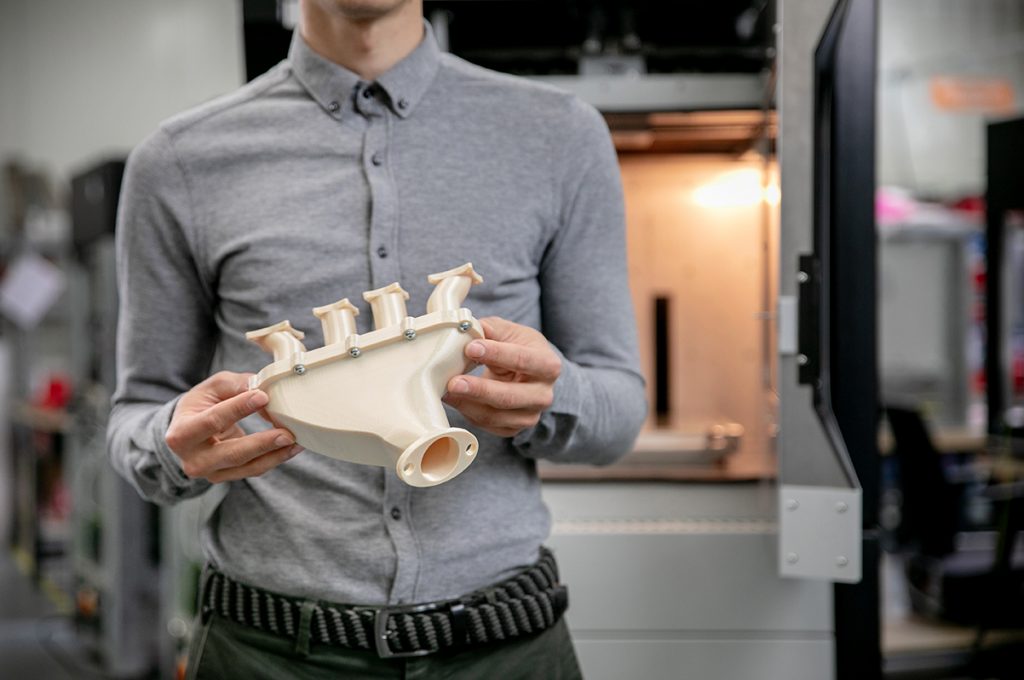
3D printing filaments – learn more how to Automate the correct preparation of your materials for accurate, strong, and high-quality parts with Material Management System
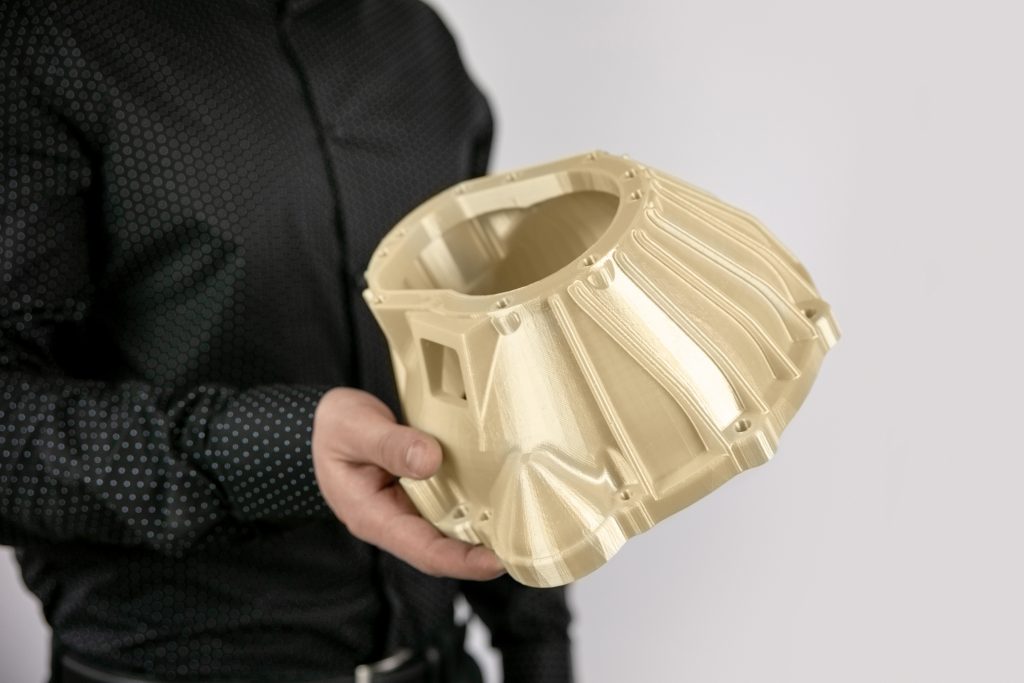
A semi-crystalline polymer of the polyetheretherketone family, or PEEK, is characterised with great resistance high temperatures, which means that it may be used wherever the operating temperature reaches as much as 240 degrees Celsius. It is durable and prone to many chemical reagents. The yield point of the material may reach the values comparable to aluminium. It is a 3D printing filament which requires adequate temperature in printing. In order to arrive at the best printing quality the temperature of approximately 360–400 degrees Celsius on the printing head and about 60 degrees Celsius in the printing chamber must be ensured.
Lately, the medical sector has been vividly interested in the material. In that sector PEEK may be used in manufacturing dental instruments, endoscopes or dialysers. Moreover, the properties of the filaments are widely used by automotive or aviation companies. PEEK may serve, for example, to manufacture such elements as bearings, piston parts, pumps, valves or insulation
In the aviation sector PEEK has for some time now been replacing metal elements in some parts of planes, mainly in the engines. Applied in the external structure elements, it ensures perfect resistance to corrosion caused by moisture. It is also used in manufacturing corrugated tubes to protect cables and optic fibres in the electric systems of planes.
Consult your project with 3D printing experts
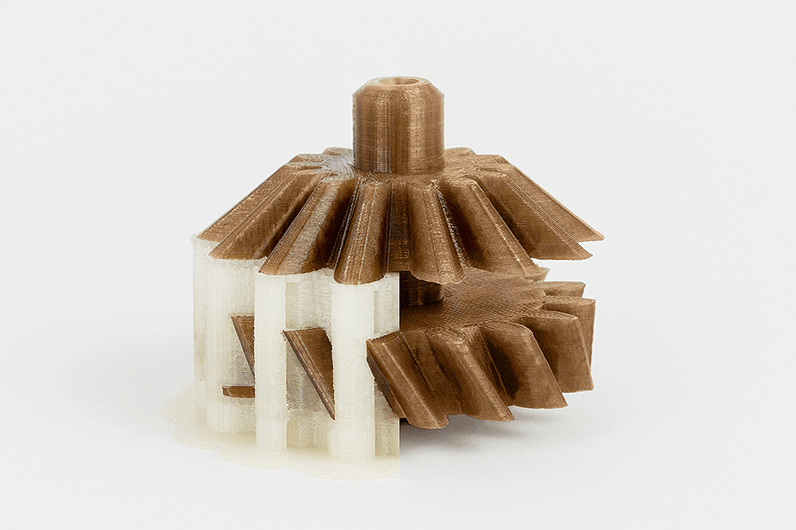
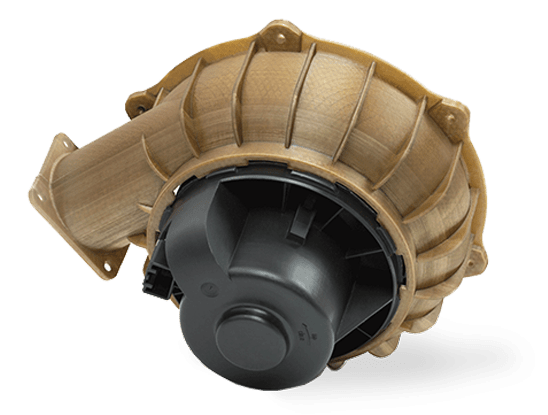
PEKK is a 3D printing filament very similar to PEEK, but with higher glass transition point and lower crystallisation speed, which facilitates the 3D printing supervision process. The filament is characterised with high rigidity, durability and resistance to wear and tear. Thanks to that it may replace elements usually made of steel or other metal alloys in some applications. It is broadly used in the automotive and chemical sectors to create structural elements, e.g. gear wheels, sleeves, bearing, shafts, or ball valve sealing. Due to its exceptional thermal resistance, PEKK is fit for sterilisation. This means that it may be used in medicine and may come into contact with food. So, it serves the production of dental instruments, medical implants and kitchen utensils.
PEKK printouts are used by Brzeska Fabryka Pomp i Armatury MEPROZET Sp. z o.o., a pump and fittings manufacturer, to produce elements for belt oil skimmer. The device serves removal of oil which builds up in the cooling liquid. In this case, PEKK replaces AISI 316 grade steel and contributes to reduced wear and tear of the transport belt, as the printed part is chemically resistant to most types of coolants and oils,
Replace your parts with 3D printed PEEK elements
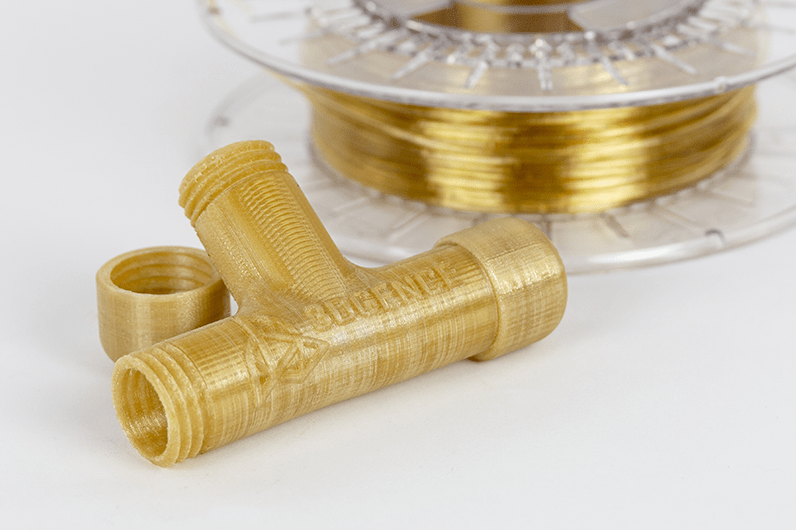
Learn more how to printing filaments and how to drying filaments
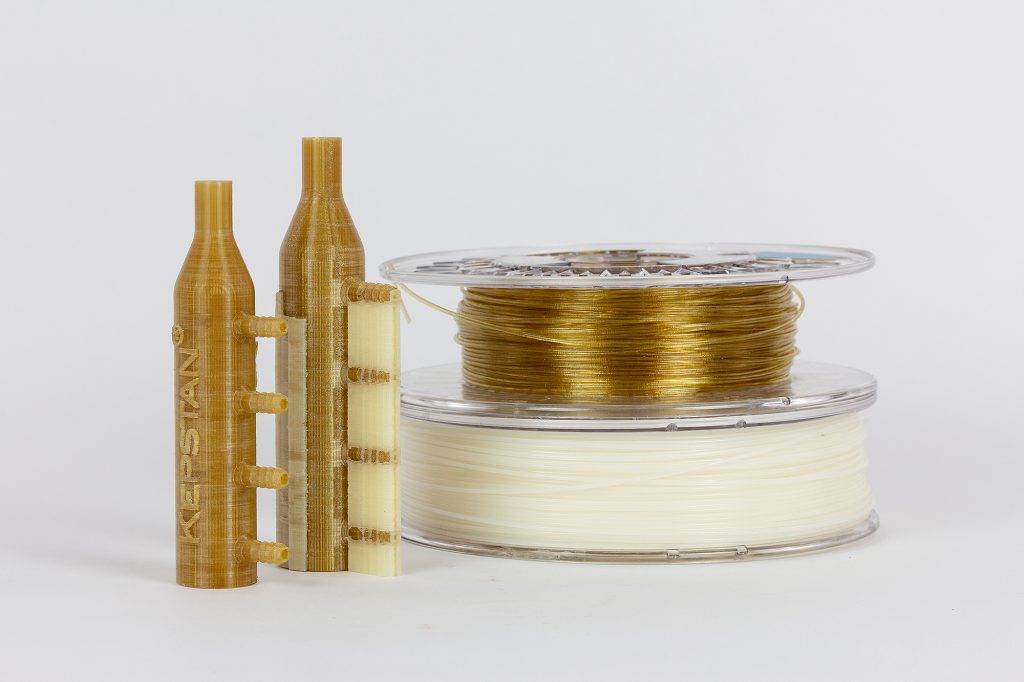
The materials are reinforced with carbon or glass fibres. They are generally used in industrial injection processes. The models printed of the materials have matt surface and are characterised with thermal resistance, hardness and durability.
PA-CF and PA-GF 3D printouts may successfully replace metal elements in many applications. They are used mainly by the aviation sector to produce parts of unmanned planes. They are also used as material for production tools.
If you have not idea what filaments will proper for your project, you can consult it with our experts: [email protected]
The 3DGence MMS provided pre-configuration for material requirements and reduces the risk of print failure and inadequate final material results. The automated MMS prepares the materials for seamless printing and maximum strength, thermal, and chemical resistant properties.
Moreover, an additional enhanced feature is the real-time connectivity to 3DGence CONNECT™ – the software dashboard and connected cloud platform that enhances the user experience, productivity, and throughput. The MMS reads the 3DGence materials to instantly load proper configurations and send real-time status to the 3DGence Connect™ software solution for better workflow and print management.
Functions and Benefits
Scan 3DGence Certified Materials to the Material Management System (MMS) reader and the user interface will provide instructions and will automatically load the preconfigured drying or storage program. Each material will processed according to manfacturer’s material-specific requirements. The system chooses and indicates to the exact compartment and location to dry and store the material spool.
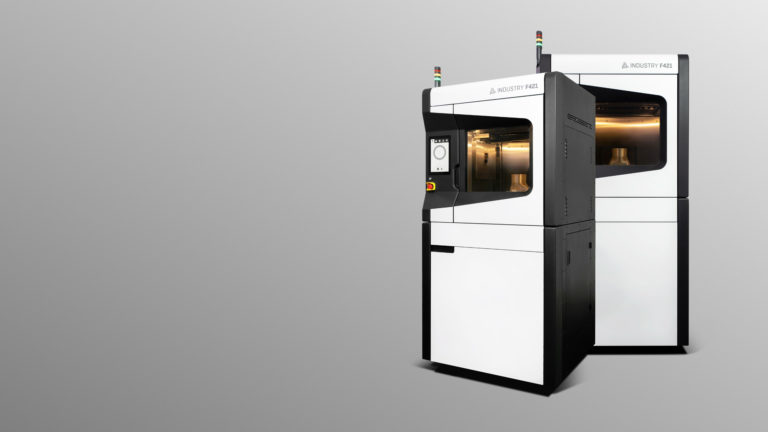
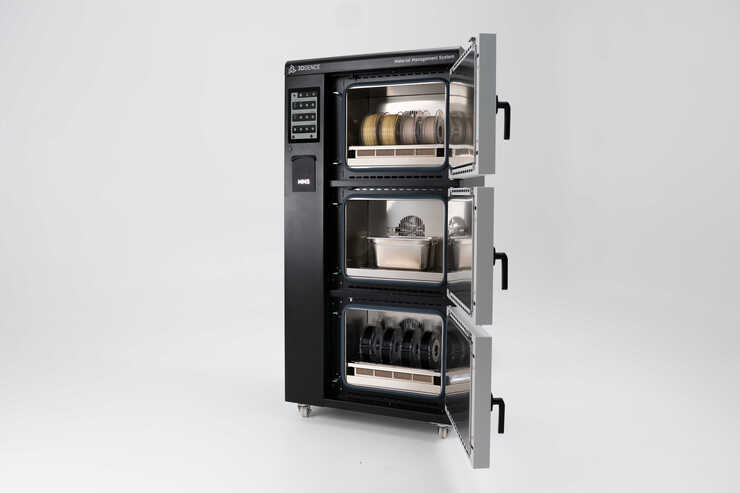
Necessary cookies are absolutely essential for the website to function properly. This category only includes cookies that ensures basic functionalities and security features of the website. These cookies do not store any personal information.
Cookies that are used to recognise you and remember your preferences or settings when you return to our site, so that we can provide you with a more personalised experience.
Cookies which measure how often you visit our sites and how you use them. We use this information to get a better sense of how our users engage with our journalism and to improve our sites and apps, so that users have a better experience.
Cookies that are used to collect information about your visit to our site, the content you have viewed, the links you have followed and information about your browser, device and your IP address.